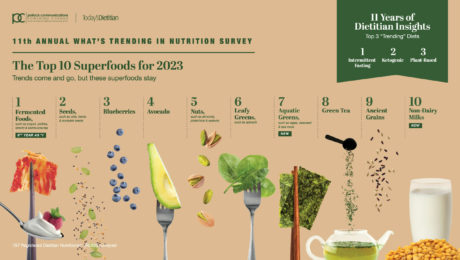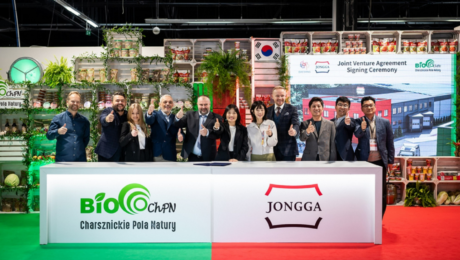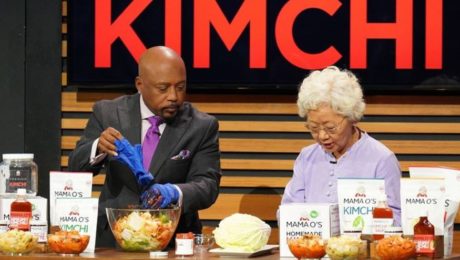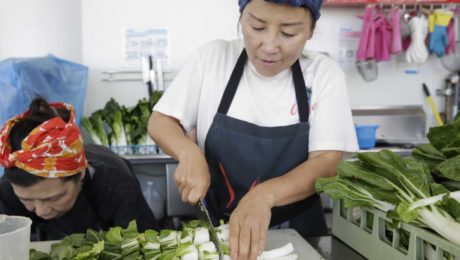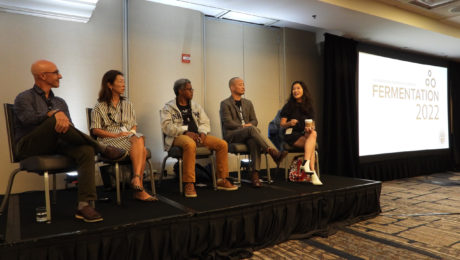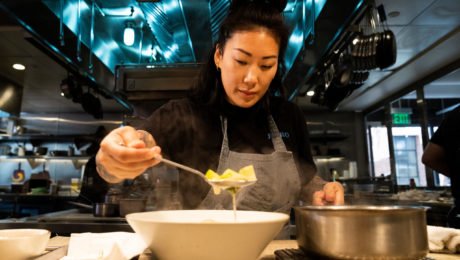Fermented Foods No. 1 for 6th Year
Fermented foods take the top spot in Today’s Dietitian annual list of superfoods for the 6th year in a row.
Registered Dietitian Nutritionists (RDNs) were polled by Today’s Dietitian and Pollock Communications on their views on superfood predictions and grocery shopping habits. The results, published in the 11th annual “What’s Trending in Nutrition” survey, predict how and what consumers will eat. Since 2019, health became the key focus of the superfood list. Striking this year is the new focus on affordable and accessible food.
“After years of keeping immune health and comfort top-of-mind during the COVID-19 pandemic, consumers are back to prioritizing affordability and convenience when shopping for food,” Pollock Communications shared in a statement.
This shift is attributed to the higher cost of groceries “as consumers navigate the cost-of-living crisis.” RDNs predict top purchase drivers are affordability and value (70.4%), ease of accessibility and convenience (59.1%) and immunity support (57.6%).
“Consumers are more aware than ever of the benefits food can provide for gut health and immune function. As consumers face higher costs at the grocery store, they’ll be looking for affordable food and snacks that still provide valuable health benefits,” says Louise Pollock, president of Pollock Communications. “Our survey findings reflect how consumer behaviors are shifting as Covid-19 restrictions loosen, remote work remains and inflation rises – from prioritizing affordable foods to continued interest in snacking.”
The survey highlights fermented food products yogurt, kimchi, kombucha and pickled vegetables. Also noteworthy is that, for the first time in 11 years of conducting the survey, the entire superfoods list is plant-based. The top ten include:
- Fermented Foods
- Seeds, such as chia and hemp
- Blueberries
- Avocados
- Nuts, including pistachios, almonds and walnuts
- Leafy Greens, such as spinach
- Aquatic Greens, such as algae, seaweed and sea moss
- Green Tea
- Ancient Grains
- Non-Dairy Milks
Plant-based diets are becoming more popular, and RDNs note it’s the third most popular diet after intermittent fasting and keto. However, only 1% of RDNs say they would recommend meat alternatives because they are highly processed products.
RDNs are also concerned about where consumers are getting their nutrition information. Social media platforms such as TikTok, Instagram and Facebook are “rife with nutrition misinformation,” but they’re where many consumers turn for nutrition advice.
“Social media influencers are talking about wellness and nutrition at rates never seen before, but people struggle to differentiate between credible information and myths. This only supports the need to amplify credible sources of nutrition information, like registered dietitian nutritionists,” says Mara Honicker, publisher of Today’s Dietitian. “With the survey in its 11th year, we are excited to continue to share insights from these experts in food and nutrition, at a time where the value of food is subject to more scrutiny.”
- Published in Health
Promoting Korean Fermented Foods
Korean ferments are gaining popularity amongst U.S. consumers, and Korean agriculture leaders are trying to increase exports of Korean-made fermented foods to the U.S. At the first Korean Fermented Food Forum this month in Washington D.C., industry leaders shared their expertise on the future of Korean ferments in the American market.
“If you’re going to look at and work with fermented foods, you really have to look at Korea because that’s where all the action is, that’s where all the good food is,” says Fred Breidt, PhD, microbiologist with the USDA (and a TFA Science Advisor). Breidt was the keynote speaker at the event. “It’s becoming more and more popular to use these kinds of foods for their tremendous flavors that they can impart to food products and their health benefits as well.”
The forum was sponsored by Korea’s Ministry of Agriculture and the Korea Agro-Fisheries & Food Trade Corporation (aT Corporation). It coincided with celebrations earlier that week for November 11 being designated as Kimchi Day being in Washington D.C. and Virginia. They join New York and California, which ratified Kimchi Day in the respective states in 2021. The aT Corporation is actively leading efforts for all U.S. states to designate a Kimchi Day.
“With the growing global popularity of Korean food, I am delighted and eager to promote awareness and educate consumers on the health benefits of kimchi and Korean fermented food products, such as kimchi, fermented soybeans, salted seafood and vinegar,” says Choon Jin Kim, president of the aT Corporation. He called kimchi “Korea’s staple fermented soul food. I believe the reason that Americans enjoy kimchi so much is that the many qualities of Korean fermented foods, such as its excellent nutritional value, health benefits and taste, are beginning to shine.”
Major Growth
Sales of Korean fermented foods are growing exponentially in the U.S. According to U.S. retail sales figures tracked by The Fermentation Association and SPINS data, kimchi increased in sales by 22% in 2022, totaling $37.56 million in sales. Sales of gochujang grew 8% in 2022, totaling $6.57 million in sales.
“It’s a wave that’s been coming for a long time,” said Rob Rubba, executive chef and partner at Oyster Oyster restaurant in D.C. “Where someone who was previously omnivore like myself, who is seeking depth of flavor in something you might not associate with a vegetable, you can achieve that through fermented foods.”
When asked why fermentation grew so much during the Covid-19 pandemic, Amelia Nielson-Stowell, TFA’s editor, says fermentation touches multiple global food movements. Fermented foods are healthy, natural, green, innovative, artisanal, flavorful and functional.
“Fermentation is not a trend, it’s the oldest food craft, it’s a traditional food art with history in every culture around the world and it’s absolutely having a resurgence here in the U.S.,” Nielsen-Stowell says.
She points out that, while kimchi grew 22% in sales this year, it’s increased market size to 16% of the fermented vegetables category. In 2021, kimchi sales grew 90%, but were only 7% of the fermented vegetables category.
“More brands tuned into kimchi’s popularity, so we’re seeing more market saturation,” Nielsen-Stowell says. “There’s huge opportunities for more Korean fermented foods here in the U.S.”
Kheedim Oh attribute’s part of kimchi’s success to Korean agricultural leaders. Oh, the chief minister of New York-based brand Mama O’s Premium Kimchi, says “We have to give credit to the Korean government and groups like the aT because the Korean government recognizes the soft power of promoting.”
When he began Mama O’s 20 years ago, there were few American-made kimchi companies. Now, “there’s like a new kimchi company everyday. I don’t think it’s going to stop because kimchi is the best food ever, it goes with everything.”
Julie Sproesser agrees. Sproesser, the Interim Executive Director of Restaurant Association Metropolitan Washington, says she’s seen Korean ingredients and Korean hybrid restaurants across the D.C., Maryland and Virginia areas increase in the last seven years.
“It seems like it’s not an accident and not going anywhere,” she adds.
Today’s Science
During his presentation, Breidt shared an overview on Korean fermented foods, including kimchi, gochujang, ssamjang and doenjang.
Kimchi’s origin begins 11,000 years ago to the start of one of the world’s “first technologies invented” – pottery. Koreans discovered adding veggies with salt and water could preserve food during a time there was no refrigeration.
Scientists are continuing to learn about the significant health benefits of the probiotic-rich, lactic acid bacteria in fermented foods. Breidt says kimchi is especially beneficial because it has 10 million to 1 billion live lactic acid bacteria per gram. Through emerging genomic tools, science is now linking specific lactic acid bacteria strains in fermented foods to health benefits.
There are challenges to selling in the U.S. market, though. Briedt says many Americans like a lightly-fermented kimchi (with a pH in the high 3’s or low 4’s), but once fermentation has begun, it’s hard to stop unless it is refrigerated.
“It’s difficult to get lightly-fermented kimchi that’s imported from somewhere else. You pretty much have to get it locally or near the source of where it’s being produced,” he says, noting because kimchi is a live, fermented product, it doesn’t travel well. “The flavors will change over time, and the evolution of these microbial communities is going to proceed unless you somehow sterilize the product, which is really counter to the whole idea of what excites people about kimchi.”
The environmental factors around fermented vegetables must be meticulously monitored to produce a consistent product. Like the freshness of the ingredients, the correct size of the fermentation vessel, the cut of cabbage and the proper sterilization of cutting machines.
“Having access to high-quality products here I think is really boosting this, and it’s going to keep going as long as we continue those efforts,” Breidt adds.
The 2022 Korean Fermented Food Forum was the first, though it is expected to recur annually, coinciding with Kimchi Day. Jeanie Chang was the moderator of the forum, a licensed clinician who uses Korean dramas as a way to explore mental health through her Instagram, Noona’s Noonchi.
Poland Becomes Europe’s Kimchi Hub
The world’s largest kimchi producer – Daesang Corporation – is building their first European factory in Poland.
Daesang is investing $10.6 million to build the Kraków facility. It is a joint venture – called Daesang ChPN Europe – with Polish food producer Charsznickie Pola Natury (ChPN), who specializes in fermented foods. It will be the Korean company’s 11th overseas production facility – one facility is in the U.S. and the others are in China. They plan to produce 3,000 tons of kimchi a year.
“The Polish joint venture is yet another adventure for our attempts to globalize kimchi,” said Lim Jung-bae, CEO of Daesang. “We will do our best to promote the excellence and legitimacy of kimchi in Europe, following our efforts in the US.”
Kimchi is netting huge sales worldwide. Daesang dominates the export market – 60% of kimchi export sales are from Daesang. Their 2021 exports were $67 million, a 131% increase since 2016. European exports are increasing annually for the company at about 20%. The Netherlands and UK are the top European kimchi importers.
Read more (The Korea Herald)
- Published in Business
Shark Tank’s Blunder
Fans are upset after investors on Shark Tank turned down a deal on Mama O’s Premium Kimchi. The exposure, though, netted some big sales for the Brooklyn-based fermentation brand.
Founder Kheedhim Oh and his mom Myung Oh appeared on the show’s 14th season, which aired in October. Oh pitched an investment of $250,000 for 10% equity in the company. But none of the five sharks – four who had surprisingly never tasted kimchi – took the deal. Though kimchi is exploding in popularity in the U.S. (sales increased 90% last year), it illustrates that education is still needed for kimchi to achieve mainstream acceptance in the American market.
“Honestly, I thought they would be more hip to what is actually going on in the world and the wave that fermented foods is having,” Kheedim (a TFA Advisory Board member) said in an interview with TFA. “I was generally just surprised about the lack of general knowledge or interest in fermented foods. The show has made my mission even stronger to help people eat a more Korean diet with kimchi being an important part of it.”
Despite their rejection of the first fermented food to appear on the show, Kheedim said Mama O’s received a nice sales bump from the show. After the show aired, Mama O’s netted four months of business sales in seven days. There was another bump in sales after supermodel Bella Hadid shared on Instagram stories how disappointed she was that the sharks passed on Mama O’s.
“I’m very grateful to Shark Tank because it was a great opportunity to help demystify making kimchi at home using the Mama O’s Homemade Kimchi Kit,” he added.
On the segment, Kheedhim shared his story of beginning the Mama O’s brand with just $50 and a skateboard. Today, Mama O’s sells various kimchi flavors, kimchi paste, kimchi sauce and the make-your-own kimchi kit. Eight years since launching, Kheedim has never used outside investors, always putting his own profits back into the business. Sales were $815,000 in 2021 and will reach an estimated $1 million in 2022. The sharks were impressed with the profits. It costs the company $2.65 a bag to make the kimchi, but it retails for $8.99. The wholesale kits cost $8.25 to make, but sell for $20.
Kheedim – who had to sign an NDA so can’t provide many details about the process – told TFA that he spent months perfecting the pitch, but the live Q&A did not go as smoothly as he wanted. He accidentally handed out his Super Spicy kimchi variety for sampling instead of the classic, milder flavor. He was planning to use the money to hire a production manager, increase broker coverage and fund the brand’s move this month to a larger production space in Queens, New York.
Still, the show has been excellent exposure for Mama O’s. In addition to the sales bump, Mama O’s followers on social media increased and individuals and companies continue to reach out to Kheedim with business opportunities.
During the episode, Kheedim told the sharks how “kimchi is a health food but more importantly it tastes incredible and not just with Korean food either” like hamburgers, hot dogs and mac and cheese.
“What’s makes our kimchi the best is our authentic korean mom recipe,” Kheedim told the sharks.
Kheedim’s mom, Myung, 81, was a fan favorite. She shared how kimchi is an ancient superfood from korea, “naturally fermented and it is full of probiotics.” She also detailed how proud she is of her son, for being an “honest, hardworking entrepreneur who is passionate about kimchi.”
Ultimately, the sharks shared different reasons for not investing. Mark Cuban said he’s concerned Kheedim has been investing his own money back into the company. Lori Greiner says she loves kimchi but found Mama O’s “not investable.” Kevin O’Leary said, though he sees kimchi thriving in the health food space, “the hardest part of this is going to get people to actually try it.” Daymond John admitted he wasn’t “obsessed” with kimchi. Kendra Scott said she didn’t know what kimchi was.
Fans were not pleased. They took to social media to voice their opinion.
“Many entrepreneurs come and go, but only some define the season. What a positive spirit to the pitch. Wishing you all the success.” @umang.thareja
“You should have got the money. They are fools!” @lifebettergreen
“Sharks made a HUGE mistake by not investing. More people in America just need education on kimchi. You guys are going to kill it. Mama O was amazing.” @s.andersn
The day after airing, Kheedim made an Instagram post with the Anthony Bourdain quote: “Americans want kimchi. They want it on their hamburgers. It’s like when Americans started eating sushi. A huge tectonic shift. That funk. That corruption of the flesh. That’s exactly the flavor zone that we are all heading towards.”
Of note: in 2018 during the show’s second season, the sharks did invest in the Kombucha Shop, a DIY kombucha-making kit.
- Published in Business, Food & Flavor
SF’s Vegan Kimchi Queen
Aruna Lee’s path to running a fermented food brand is riveting, from her journey as an orphan to Buddhist nun to founder of Volcano Kimchi.
Lee’s story is detailed in a San Francisco Chronicle feature. Adopted by her teacher, she remembers sneaking out of bed in the middle of the night and digging up dongchimi, a winter radish kimchi fermented in large crocks buried in the ground. Later, as a nun in seminary school, Kimchi was communally made during gimjang, the process of kimchi making. The members of the monastery would prepare bulk batches in winter and spring in a large bathtub, storing it in underground crocks.
Curious about the world, Lee later left the monastery and traveled the world. She met her husband and eventually made roots in San Francisco. After the recession forced her to leave her career in the nonprofit sector, she began making kimchi for sale at farmers markets in 2014 without any professional cooking experience. Her organic kimchi is made similarly to how she learned in the monastery — including keeping it vegan.
“When you add fish sauce and shrimp paste, it overpowers everything and you don’t taste each ingredient. When you add simple ingredients, it’s balanced. It has a harmony of that flavor,” Lee says.
Read more (San Francisco Chronicle)
- Published in Business, Food & Flavor
Traditions of Fermentation, Cultural Appropriation & Diversity
Cooking isn’t limited to only making the dishes of one’s ethnicity. The cultural identity of that food becomes murky when it gets transactional. Commercializing a food without respecting and honoring its history and tradition is inauthentic, damning to immigrant producers and threatens to erase traditional foods.
“Someone with more power or dominance, they can create their own kimchi – that doesn’t have any resonance to its tradition – and get it on the shelves of Wal-Mart and make it commercially successful. I don’t have that opportunity because I’m a woman, I’m Korean, I’m a minority and I’m just trying to tell the story about kimchi in my way,” says Lauryn Chun, founder and CEO of Mother-in-Laws kimchi. Chun’s kimchi comes from her mother’s recipe used in the family restaurant in California, Jang Mo Jip. “It’s my heritage of food that I enjoy sharing with Americans.”
Chun’s experience is similar to many BIPOC producers. It’s difficult for minority producers to compete with the white-owned brands that often have more money to launch a food company and receive preferential treatment by retailers for store placement.
“When you turn it into a business and you’re profiting as a company, we need to be more sensitive and more deliberate in how we give credit to people,” adds Robert Danhi, chef and co-founder of Flavor360 Solutions (and a TFA Advisory Board member)
Speakers discussed the wide range of issues related to traditional foods in a panel during TFA’s conference FERMENTATION 2022 titled “Traditions of Fermentation, Cultural Appropriation and Diversity.” Panelists included Chun, Danhi, Beverly Kim (chef and owner of restaurants Parachute and Wherewithall in Chicago), Kheedim Oh (founder of Mama O’s Premium Kimchi and TFA Advisory Board member) and Ismail Samad (founder of Loiter and Wake Robin Foods). The discussion was moderated by Josephine Wee (assistant professor at Penn State University and a TFA Advisory Board member).
Do Cultures Own Their Foods?
“There’s appropriate appropriation,” says Oh, whose Brooklyn-based kimchi brand is also based off the recipe of Oh’s mother, a Korean American. “Some of these brands, is what they’re making even kimchi? Kimchi is such a popular buzzword now. But it’s an unfair advantage when you’re competing with me and Lauryn to get your kimchi on the shelf and it’s very loosely kimchi.”
Brands are coming to retail with condiments labeled kimchi that are far from the traditional Korean condiments. They’re skimping on ingredients, like not using traditional Napa cabbage and opting for cheaper produce varieties. Though there’s hundreds of versions of traditional kimchi, some brands are veering too far to gain sales (Oh joked about a raspberry cheesecake kimchi).
“We need to change the narrative from appropriate to appreciation, celebration and preservation,” Wee adds.
Should a culture own a fermented food? Like Koreans just selling kimchi? The panel didn’t agree with that notion. But Samad points out a culture’s food is taken away from them when it’s exploited.
Through his nonprofit Loiter, Samad tackles the effects of systemic racial and economic injustice. He’s helping the residents of East Cleveland by developing successful, community-owned businesses – like Wake Robin Foods, a fermented food brand Samad purchased. Wake Robin will create ferments using produce from local, urban farmers.
“It’s black owned by black farmers so we can get some black dollars circulating in our culinary economy so they can have some freaking version of reparations for what has happened,” Samad says. “For me this is straight financial, who gets the opportunity to scale up.”
Samad says there’s an entire food system of African fermented foods “not being appropriated or appreciated in the U.S.” He hopes to disrupt the market.
“There’s an opportunity to introduce products that are owned by own by us, and by us I mean the African Diaspora,” he says.
Nuances in International Dining
Many American diners, though, are “still even at the elementary level of understanding the differences between different cultures in a diaspora,” says Kim, a former Top Contestant. “Asian cuisine is not just one monolithic cuisine.”
Some pan-Asian restaurants sell sushi (Japan) alongside kimchi (Korea) and pad thai (Vietnam), a “mish mash” of foods from different Asian countries. “We have to “continuously dig deeper to show there are nuances between the cultures,” she says.
It can be a difficult concept for chefs, too, who are trained in primarily French cuisine at culinary school. When Kim went through culinary school, a short quarter was focused on global foods, “the rest is basically Fresh cuisine.”
Ethnic food — especially Asian fare— the food is often stereotyped as cheap, “it’s a bamboo ceiling that you can’t charge high prices,” Kim says. Western diners often don’t take into account the differences in quality of ingredients or the creativity, care and time in cooking a dish. “We’ve been seen as cheaper because we’re Asian, so people question why our prices are so high.”
Chun, who grew up helping in the family’s Korean restaurant, began Mother-in-Law’s kimchi questioning why kimchi wasn’t in the ranks of specialty craft foods like fine cheese.
“From the perspective of western fermented foods, from cheeses to wines to craft beers, those are the only things people are willing to spend their money on,” Chun says. She adds she felt very proud to be the first kimchi in specialty grocery store chain Dean and Deluca.
In retail, many international food brands get placed in the ethnic aisle. But why does a sauce from an international region get placed in the ethnic aisle while spaghetti is placed in the sauces aisle?
“I’m torn over the concept of that existing,” Oh says. “We’ve been subjugated to the ethnic aisle aka the global ghetto where there’s no reason for it except the fact that I’m Korean.”
Cultural Regulatory Bias
Are there conflicts between tradition and science? Panelists shared how some health regulators don’t understand cultural ferments, causing batches of fermented food to be deemed unsafe for human consumption and thrown out.
Kim attempted to start a wholesale kimchi brand during the brand. Studies prove kimchi is made safely at a pH range of 4.2-4.5, but the regulator from the health department was told Kim legally had to keep kimchi under pH levels 3.3 to keep it safe.
“There’s so much confusion around it, I had to reach out to food scientists to clarify it, and we don’t want to get in trouble,” Kim says. She ended up cancelling the brand because securing regulatory approval was so difficult.
Oh adds: “I think there’s a big cultural bias when it comes to fermented foods. In the U.S., it’s either the food is 100% clean scrubbed and pasteurized or it’s not – and the not is dangerous and dirty. Where fermented foods predates modern electricity and modern science, there’s a reason why it’s safe because it works out that it’s a very safe food because, through the lactic acid fermentation, it lowers the pH and that helps preserve the food.”
- Published in Business, Food & Flavor
Kimjang, the Act of Preparing Kimchi
As Koreans enter the autumnal kimjang season – the time of year when kimchi is prepared with fresh, seasonal vegetables – The New York Times highlights how cooks outside of Korea are preparing the dish.
“For many communities in South Korea, a kimjang (also spelled gimjang) remains a grand act. But these days, Korean cooks outside of the motherland are adapting to their individual environments accordingly, scaling down their kimjangs to fit their lives or even hosting them virtually,” writes NYT food journalist Eric Kim, author of the book Korean American: Food That Tastes Like Home. “In a world where most people buy their kimchi at the store, preserving the act of preservation has become a priority for Koreans who wish to carry on the tradition of kimjang.”
Many American Koreans have memories of making kimchi with their parents and grandparents. Two women interviewed in the article have made kimchi-making their livelihood. Lauryn Chun, founder of Mother-in-Law’s Kimchi, says “If you can make a salad, you can make kimchi.” Ji Hye Kim, chef of Miss Kim in Michigan, describes kimchi as being like a zombie – “Not quite alive, but not quite dead.”
Kimjang has been recognized as a cultural heritage and “set of living knowledge” by UNESCO since 2013. The pickled flavor and gamchil mat (meaning “savory taste” in Korean) are defining elements of kimchi.
Read more (The New York Times)
- Published in Food & Flavor
Chicago: A Fermentation Hub
If you still think of hot dogs and deep dish pizza as the icons of Chicago’s culinary scene, you need to think again. The so-called Capital of the Midwest is a hub of innovation in the food industry. Chicago has the largest food and beverage production in the U.S., with an annual output of $9.4 billion. Food startup companies in the region raised $723 million in venture capital last year.
“Chicago is one of the most diverse cities for eating,” says Anna Desai, Chicago-based influencer of Would You Like Something to Eat on Instagram. ”Our culinary scene is constantly elevating and evolving. We are always just a neighborhood or tollway away from experiencing a new culture and cuisine. I’m most excited when I find an under-the-radar spot or discover a maker who can pair flavors and ingredients that get you curious and wanting more.”
Desai started her blog in part because she wanted to champion the Asian American and Pacific Islanders (AAPI) community in the Chicago food and beverage scene. “Food has long served as a cultural crossroad,” she adds, and Chicago’s multicultural cuisine exemplifies that sentiment.
Chicago is home to some of the most creative minds in fermentation, from celebrity chefs, zero waste ventures, alternative protein corporations and the world’s largest commercial kefir producer. There are dozens of regional and artisanal producers lacto-fermenting vegetables, brewing kombucha and experimenting with microbes in food and drink.
“Chicago is a great food city in its own right, so naturally there is a ton of talent in the fermentation space,” says Sam Smithson, chef and culinary director of CultureBox, a Chicago-based fermentation subscription box. “The pandemic’s effect on restaurants has also spawned a new wave of fermenters (ourselves included) that are looking for a path outside the grueling and uncertain restaurant structure to display our creative efforts. This new wave is undoubtedly community-motivated and concerned more with mutual aid than competition. There is a general feeling that we are all working towards the same goal so cooperation and collaboration is soaring and we are seeing incredible food come from that.”
Flavor is King
Flavor development is still the prime motivation for chefs to experiment with fermentation. A good example is at Heritage Restaurant and Caviar Bar in Chicago’s Humboldt Park neighborhood.
“Fermentation has been a cornerstone of the restaurant since its inception,” says Tiffany Meikle, co-owner of Heritage with her husband, Guy. “With the diverse cuisines we pull from, both from Eastern and Central Europe and East Asia, we researched fermentation methodologies and histories, and started to ‘connect the dots’ of each culture’s fermentation and pickling backgrounds.”
Menus have included sourdough dark Russian rye bread, toasted caraway sauerkraut, kimchi made from apples, Korean pears and beets and a kimchi using pickled ramps (wild onions). Heritage has also expanded their fermentation program to the bar, where they’ve created homemade kombucha, roasted pineapple tepache, sweet pickled fruits for cocktail garnishes, and kimchi-infused bloody mary mix.
“It’s fascinating to me that there are so many ingredients you can use in a fermented product,” says Claire Ridge, co-founder of Luna Bay Booch, a Chicago-based alcoholic kombucha producer. “People are really experimenting with interesting ingredients in kombucha…I have seen brewers do some of the wildest recipes and some recipes that are very basic.”
Innovating Food
Chicago-based Lifeway Kefir is indicative of the innovation taking place in the city. Last year the company expanded into a new space: oat-based fermentation, launching a dairy-free, cultured oat milk with live and active probiotics.
“We’ve spent so many years laying the groundwork in fermented dairy,” says Julie Smolyansky, CEO. “Now we’re experimenting and expanding to see what’s over the next horizon, though we’ll always have kefir as our first love.”
Chicago is home for two inventive fermented alternative protein startups: Nature’s Fynd and Hyfé Foods. Both companies were born out of the desire to create alt foods without damaging the environmental.
“Conscious consumerism is a trend that’s driving many people to try alternative proteins, and it’s not hard to understand why,” says Debbie Yaver, chief scientific officer at Nature’s Fynd. The company uses fermentation technology to grow Fy, a nutritional fungi protein. “Fungi as a source of protein offer a shortcut through the food chain because they don’t require the acres of land or water needed to support plant growth or animal grazing, making fungi-based protein more efficient to produce than other options.”
Alternative foods outlasting the typical trend cycle is a challenge for companies like Nature’s Fynd. When grown at scale, Fy uses 99% less land, 99% less water and emits 94% fewer greenhouse gasses than raising beef. But, to make an impact, “we need more than just vegans and vegetarians to make changes in their diets,” Yaver adds.
Waste Not
Numerous companies are using fermentation as a means to eliminate waste. Hyfé Foods, another player in the alternative protein space, repurposes sugar water from food production to create a low-carb, protein-rich flour. Fermentation turns a waste product into mycelium flour, mycelium being the root network – or hyphae (hence the company name) — of mushrooms.
“[We’re] diverting input to the landfill and reducing greenhouse gas emissions at scale,” says Michelle Ruiz, founder. “Hyfé operates at the intersection of climate and health, enabling regional production of low cost, alternative protein that reduces carbon emissions and is decoupled from agriculture.”
Symmetry Wood is another Chicago upcycler. They convert SCOBY from kombucha into a material, Pyrus, that resembles exotic wood. Founder Gabe Tavas says Pyrus has been used to produce guitar picks, jewelry and veneers. Symmetry uses the discarded SCOBY from local kombucha brand Kombuchade.
Many area restaurants and culinary brands also use fermentation to preserve food for the long Chicago winters, when local produce isn’t available. Pop-up restaurant Andare, for example, incorporates fermentation into classic Italian dishes.
“Finding ways to utilize what would otherwise be waste products inspired our initial dive into fermentation. The goal is not just to use what’s leftover, but to make it into something delicious and unique,” says Mo Scariano, Andare’s CEO. “One of our first dishes employing koji fermentation was a summer squash stuffed cappellacci served with a butter sauce made from carrot juice fermented with arborio rice koji. Living in a place with a short grow season, preservation through fermentation allowed us access throughout the year to ingredients we only have fresh for a few weeks during the summer.”
Industry Challenges
Despite growing interest and increasing sales, fermenters face some significant hurdles.
Smithson at CultureBox says he sees that consumers are open to unorthodox, less traditional ferments. Though favorites like kombucha and sauerkraut dominate the market, “their share is being encroached on by increasingly more varied and niche ferments.” But getting these products to market can be a challenge. Small-scale, culinary producers are challenged by the regulatory hoops they need to jump through to legally sell ferments – especially unusual ones a food inspector doesn’t recognize.
“The added layer of city regulations on top of state requirements, sluggish health department responses, and inflexible policy chill the potential of small producers,” Smithson says. But he highlights the recently-passed Home-to-Market Act of Illinois as positive legislation helping startup fermenters.
Consumer awareness and education are also vital. “Many longstanding and harmful misconceptions on the safety and value of fermented products still exist,” Smithson says.
Matt Lancor, founder and CEO of Kombuchade makes consumer education a core part of marketing, to align kombucha as a recovery drink.
“Most mainstream kombuchas are marketed towards the yoga/crystal/candle crowd, and I saw a major opportunity to create and market a product for the mainstream athletic community,” he says. “We’re on a mission to educate athletes and the general public about these newly discovered organs [the gut] – our second brain – and fuel the next generation of American athletes with thirst quenching, probiotic rich beverages.”
Product packaging provides much of a consumer’s education. Jack Joseph, founder and CEO of Komunity Kombucha, says simplicity is key.
“People are more conscious of their health now, more than ever before,” he says. “So now it comes down to the education of the product and creating something that is transparent and easy for the consumer to digest.”
Sebastian Vargo of Chicago-based Vargo Brother Ferments agrees.
“Oftentimes food is considered ‘safe’ due to lack of microbes and how sterile it is,” he says. “Fermentation eschews the traditional sense of what makes food ‘safe’. We need to create a set standardized guide for fermented food to follow, and change our view of living foods in general. One of the brightest spots to me is the fact that fermentation is really hitting its stride and finding its place in the modern world, and I don’t see it going anywhere but up in the near future.”
- Published in Business, Food & Flavor
“Koreanique” Food
As more Korean adoptees come of age to run restaurants, a new dining style is emerging: “Koreanique” (or Korean-style, Korean-inspired or “kinda Korean”).
“For these chefs, cooking is the ultimate reclamation of their Koreanness — and an act that pushes the cuisine to exciting places,” reads an article in The New York Times.
They produce dishes that “reflect their American upbringings and Korean heritage” of the adoptee chefs. Examples are: Jewish matzo ball soup with Korean mirepoix, Spam musubi burritos, kimchi-enriched carbonara, chicken marinated in kimchi brine, battered fish-sauce-laden zucchini with a sweet soy dipping sauce, jajangmyeon sauce with Bolognese and gochujang barbecue sauce.
Still, they note, feelings of imposter syndrome and cultural appropriation can take over. Adoptee chefs tell The Times they worry they’re not making Korean food authentically and they struggle with their complicated relationships with Korean food when they grew up eating a different culture’s food.
Read more (The New York Times)
- Published in Food & Flavor
A Nutrition Pro’s Fermentation Guide
Nutrition professionals need to share the details when recommending fermented products to clients. What are the health benefits of the specific food or beverage ? Does the product contain probiotics? Live microbes?
“There are a vast array of fermented foods. This is important because it means there can be tasty, culturally appropriate options for everyone,” says Hannah Holscher, PhD and registered dietitian (RD). But, she adds, remember that these are complex products.
Holscher spoke at a webinar produced by the International Scientific Association for Probiotics and Prebiotics (ISAPP) and Today’s Dietitian. Joined by Jennifer Burton, RD and licensed dietitian/nutritionist (LDN), the two addressed the topic Fermented Foods and Health — Does Today’s Science Support Yesterday’s Tradition? Hosted by Mary Ellen Sanders, executive director of ISAPP, the presentation touched on the foundational elements of fermented foods, their differences from probiotics, the role of microbes in fermentation, current scientific evidence supporting health claims and how to help clients incorporate fermented foods in their diets.
Sanders called fermented foods “one of today’s hottest food categories.” Today’s Dietitian surveys show they are a top interest to dietitians, as the general public often turns to them with questions about fermented foods and digestive health.
Here are three factors highlighted in the webinar that dietitians should consider before recommending fermented foods and beverages.
Does It Contain Live Microbes?
Fermentation is a metabolic process – microorganisms convert food components into other substances.
In the past decade, scientists have applied genomic sequencing to the microbial communities in fermented foods. They’ve found there’s not just one microbe involved in fermentation, Holscher explained, there may be many. The most common microbes in fermented foods are streptococcus, lactobacillaceae, lactococcus and saccharomyces.
But deciphering which fermented food or beverages contains live microbes can be difficult.
Live microorganisms are present in foods like yogurt, miso, fermented vegetables and many kombuchas. But they are absent in foods that were fermented then heat-treated through baking and pasteurization (like bread, soy sauce, most vinegars and some kombucha). They’re also absent in fermented products that are filtered (most wine and beers) or roasted (coffee and cacao). And there are foods that are mistakenly considered fermented but are not, like chemically-leavened bread, vegetables pickled in vinegar and non-fermented cured meats and fish.
“The main take-home message is that it’s not always easy to tell if a food is a fermented food or not. So you may need to do more digging, either by reading the label more carefully or potentially contacting the food manufacturer,” Holscher said. “When we just think of if live microbes are present or not, a good rule of thumb is if that food is on the shelf at your grocery store, it’s very likely that it does not contain live microbes.”
Does It Contain Probiotics?
The dietitians stressed: probiotics are not the same as fermented foods.
“Probiotics are researched as to the strains and the dosages to be able to connect consumption of a probiotic to a health outcome,” Holscher said. “These strains are taxonomically defined, they’ve been sequenced, we know what these microorganisms can do. They also have to be provided in doses of adequate amounts of the live microbes so foods and supplements are sources of probiotics.”
Though fermented foods can be a source of probiotics, Holscher notes: “In most fermented foods, we don’t know the strain level designation.”
“For most of the microbes in fermented foods, we’ve just really been doing the genomic sequencing of those over the last 10 years and so we may only know them to the genus level right,” she said. For example, we know lactic acid bacteria are present in kimchi and sauerkraut.
Holscher suggests, if a client has a specific health need, a probiotic strain should be recommended based on its evidence-based benefits. For example, the probiotic strain saccharomyces boulardii is known to help prevent travel-related diarrhea, and so would be good for a patient to take before a trip.
“If you’re looking to support health and just in general, fermented foods are a great way to go,” Holscher says.
The speakers recommended looking for probiotic foods in the Functional Food Section of the U.S. Probiotic Guide.
Does Research Support Health Claims?
Fermentation contributes to the functional and nutritional characteristics of foods and beverages. Fermented foods can: inhibit pathogens and food spoilage microbes, improve digestibility, increase vitamins and bioactives in food, remove or reduce toxic substances or anti-nutrients in food and have health benefits.
But research into fermented foods has been minimal, mostly limited to fermented dairy. Dietitians should be careful making strong recommendations based on health claims unless those claims are supported by research. And food labels should always be scrutinized.
“There’s a lot of voices out there that are trying to answer this question [Are fermented foods good for us?],” says Burton. “Many food manufacturers have published health claims on their labels talking about these benefits and, while those claims are regulated, they’re not always enforced. Just because it has a food health claim on it, that claim may not be evidence-based. There’s a lot of anecdotal accounts of benefits coming from eating fermented foods and the research is suggesting some exciting potential mechanisms. But overall we know as dietitians we have an ethical responsibility to practice on the basis of sound evidence and to not make strong recommendations if those are not yet supported by research.”
Reputable health claims are documented in randomized control trials. But only “possible benefits” can be linked to nonrandomized controlled trials. And non-controlled trials are the least conclusive studies of all.
For example, Burton puts miso in the “possible benefits” category because, with its high sodium content, there’s not enough research indicating it’s safe for patients with heart disease. Similarly, she does not recommend kombucha because of its extremely limited clinical research and evidence.
“We have to use caution in making these recommendations,” Burton says.
This is why Burton advises dietitians to be as specific as possible. Don’t just tell patients “eat fermented foods” — list the type of fermented food and its brand name. She also says to give patients the “why” — what is the benefit of this fermented food? Does it increase fiber or boost bioavailability of nutrients?
“Are fermented foods good for us? It’s safe to say yes,” Burton says. “There’s a lot that we don’t know, but the body of evidence suggests that fermentation can improve the beneficial properties of a food.”

